Magnetism
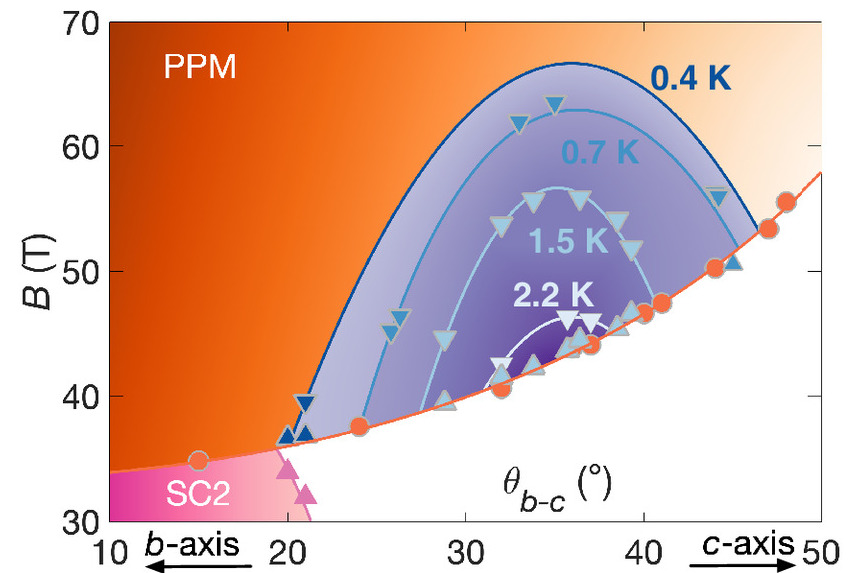
A study demonstrating the elevation of the superconducting critical temperature (Tc) in UTe2 through the application of intense magnetic fields has been published in PNAS. These findings offer valuable insights into the interplay between magnetism and unconventional superconductivity, contributing to a deeper understanding of these complex phenomena.
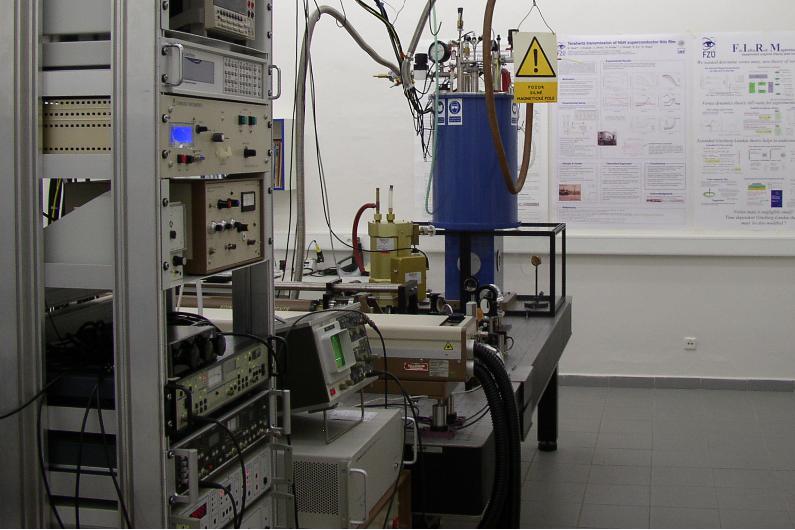
The Materials Growth and Measurement Laboratory has expanded its capabilities with an additional spectroscopic technique - far-infrared magnetospectroscopy.

The research uncovers a novel frustrated antipolar phase in EuAl12O19, drawing parallels to classical spin liquids and offering new insights into the behavior of uniaxial electric dipoles on a triangular lattice.
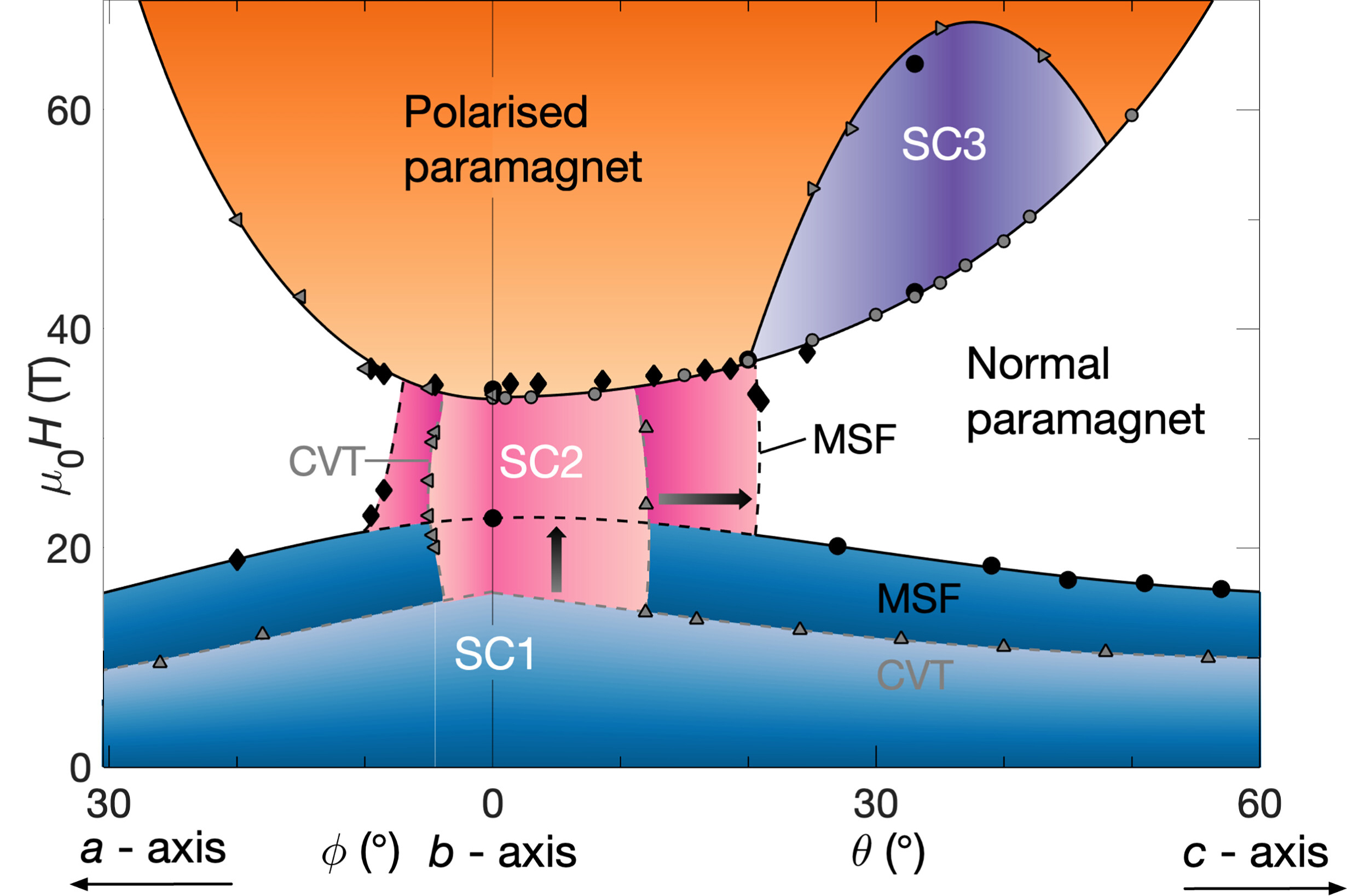
A recent paper published in PNAS eveals a significantly revised high magnetic field superconducting phase diagram in the ultraclean limit of single crystals. The study demonstrates a pronounced sensitivity of field-induced superconductivity to the presence of crystalline disorder.
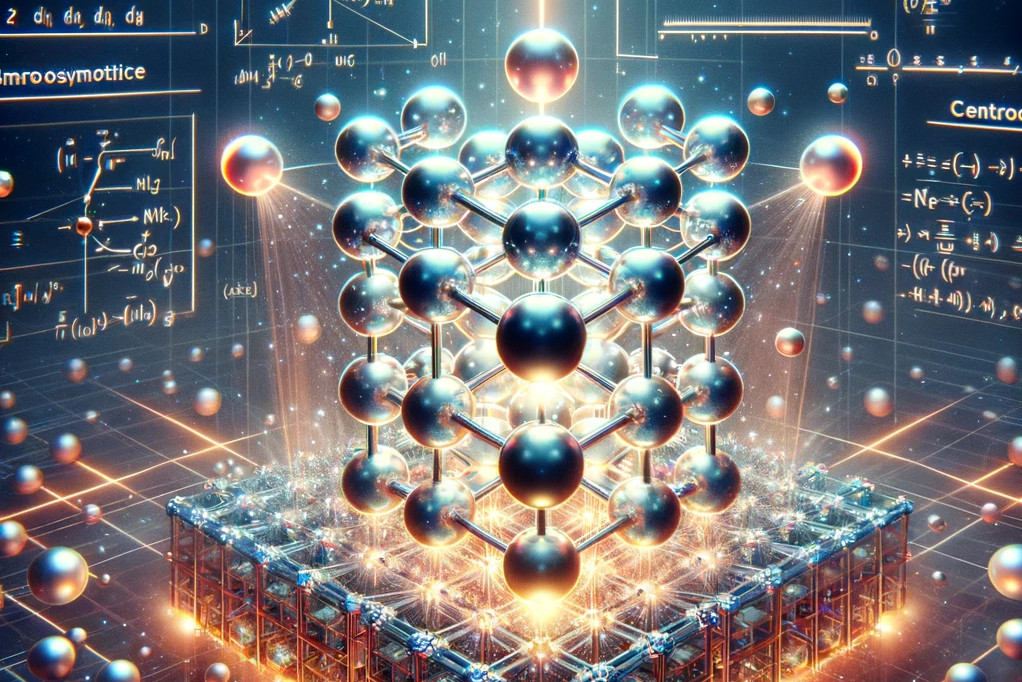
The MGML has provided high-quality single crystals of MnTe, which have enabled the confirmation of lifted Kramers spin degeneracy without net magnetization and inversion-symmetry breaking. This finding is in agreement with earlier theoretical predictions.
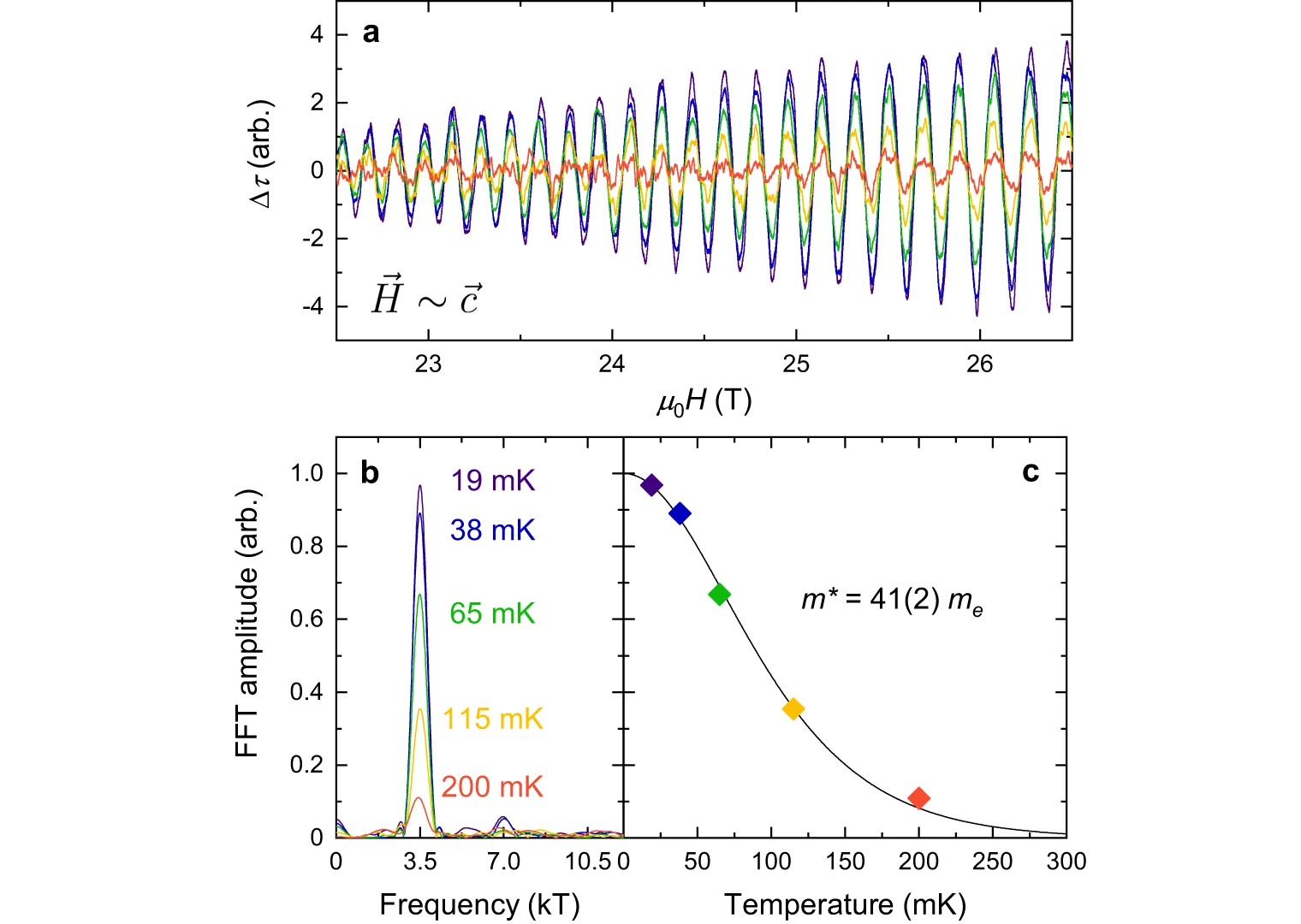
Large international collaboration opens insight on the possible symmetry of the superconducting order parameter in UTe2 utilizing high-quality single crystal grown and characterized in the MGML facilities.

Dávid Hovančík a Ph.D. student at the Department of Condensed Matter Physics is the leading author of the paper Robust intralayer antiferromagnetism and tricriticality in the van der Waals compound VBr3 selected as Editors’ choice in PRB.
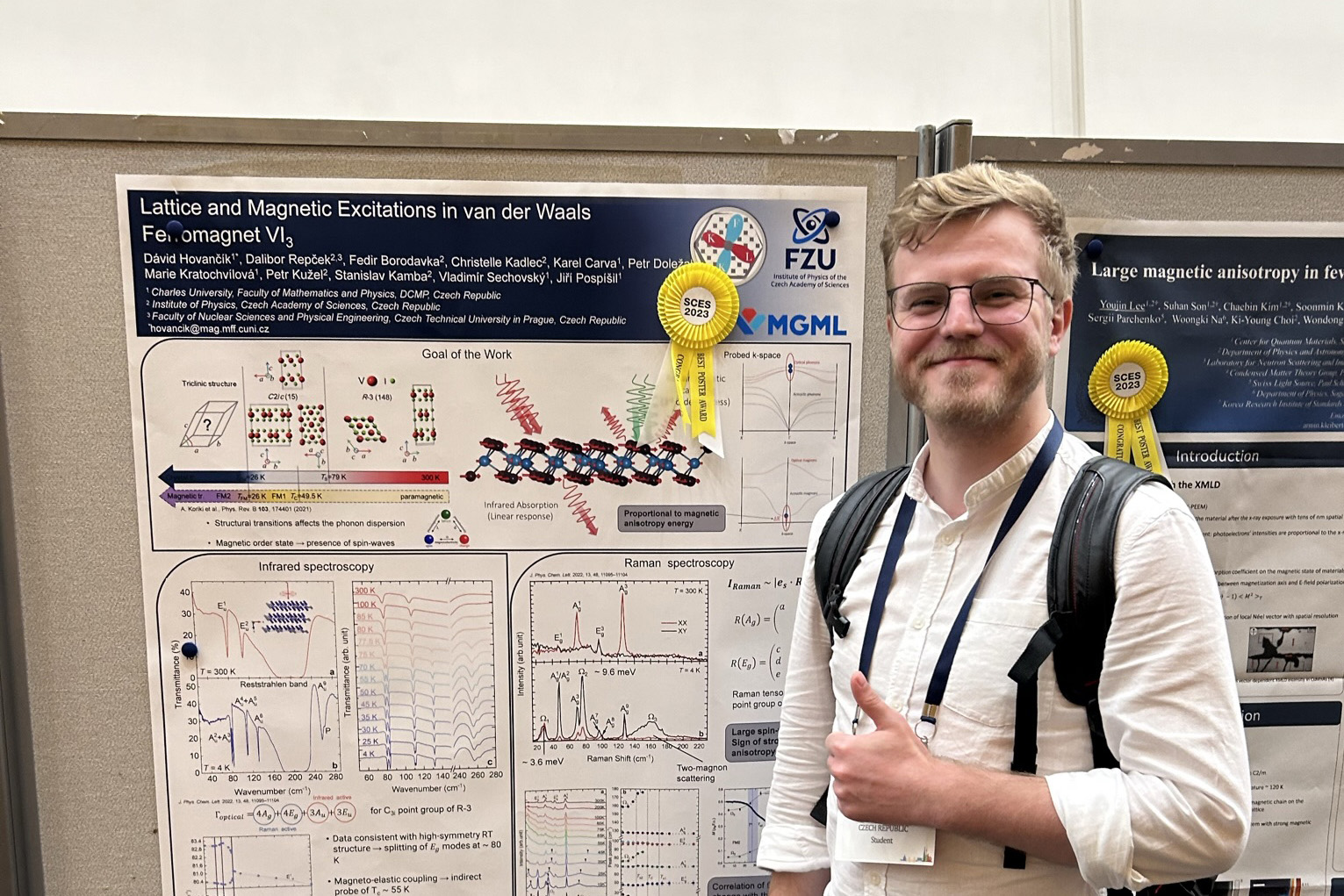
At the 2023 SCES conference, Ph.D. student Dávid Hovančík was recognized with the Best Poster Prize for his research on vanadium triiodide. His study provides fresh insights into the lattice symmetry and uncovers a promising potential application in ultrafast THz spintronics. The research, offering significant understanding into the behavior of 2D van der Waals materials, has been published in the prestigious Journal of Physical Chemistry Letters.
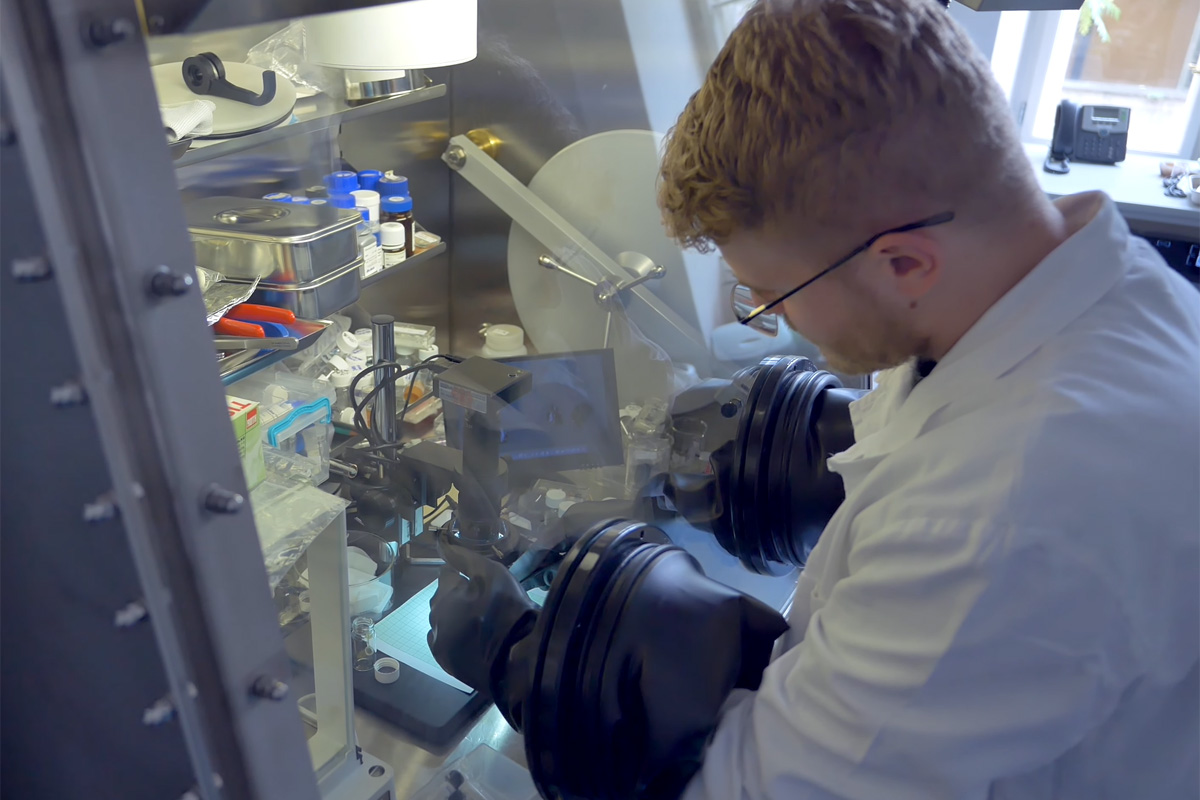
Our group used a unique capability of the X-ray magnetic circular dichroism technique to determine the magnetic orbital moment component of Vanadium ions in the layered van der Waals system VI3. We have revealed an exceptionally sizable orbital moment of V3+ ion resolving the long debate on this issue.
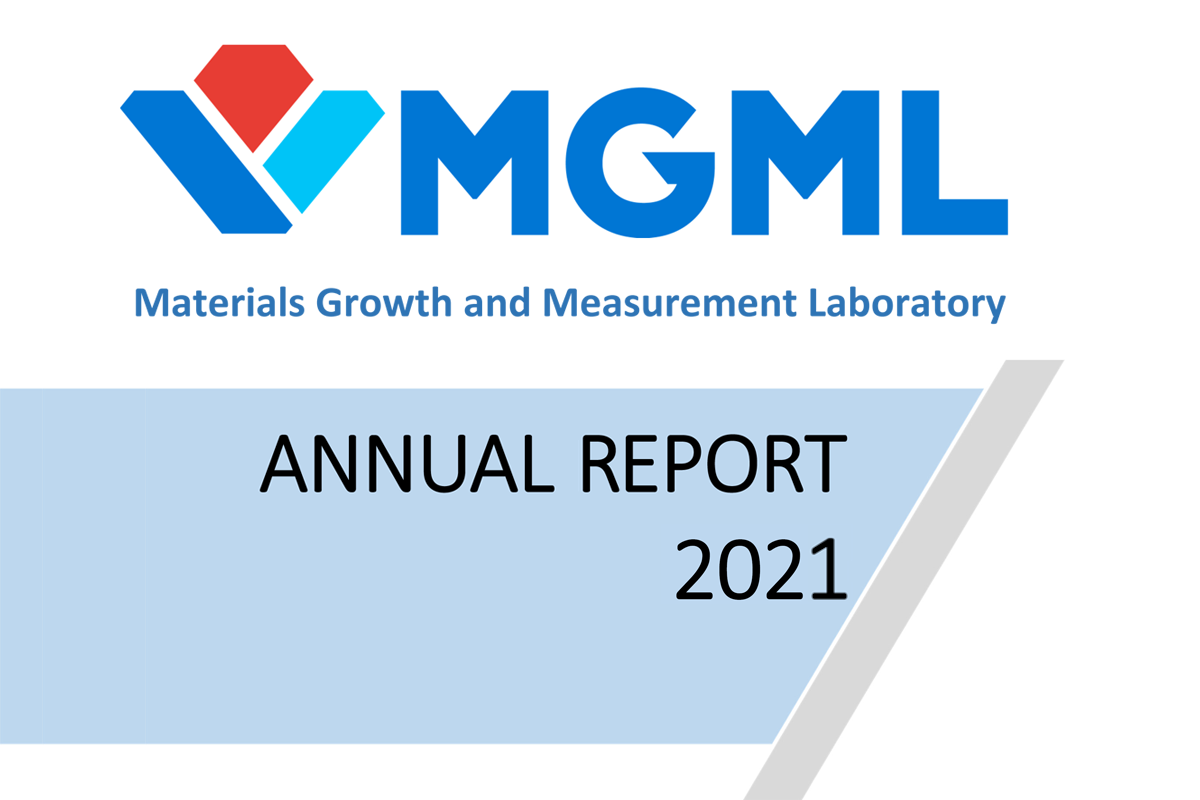
We present the annual report covering the year 2021. The MGML management has defended the project for the next long-term funding (2023‐2029). The target of the project was to broaden the research landscape of MGML by optimizing existing infrastructure activities as well as creating new structural elements.
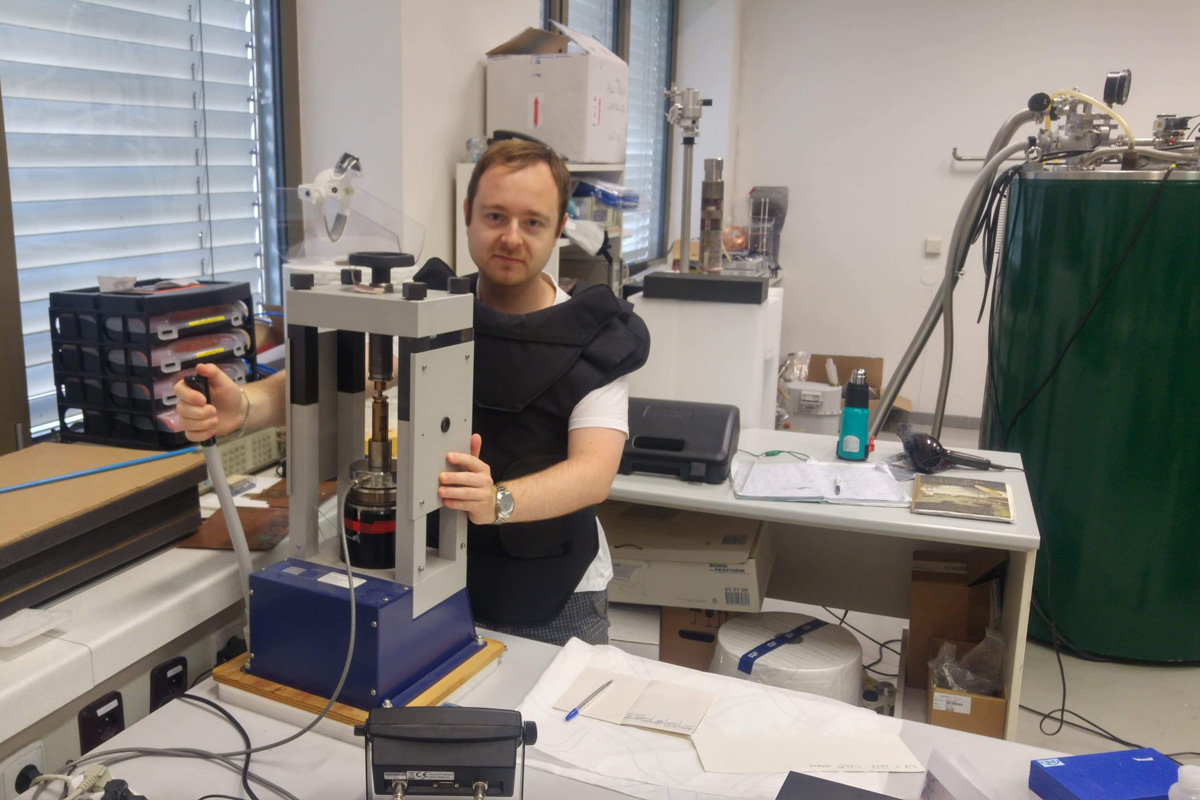
The ferromagnetic compound VI3 has been already investigated in the MGML laboratories as a member of a family of quasi-two-dimensional (2D) van der Waals materials showing promising application potential for the design of spintronic devices. As a next research step of this unique system, we have focused on the evolution of its magnetism in external pressure up to 7.3 GPa…
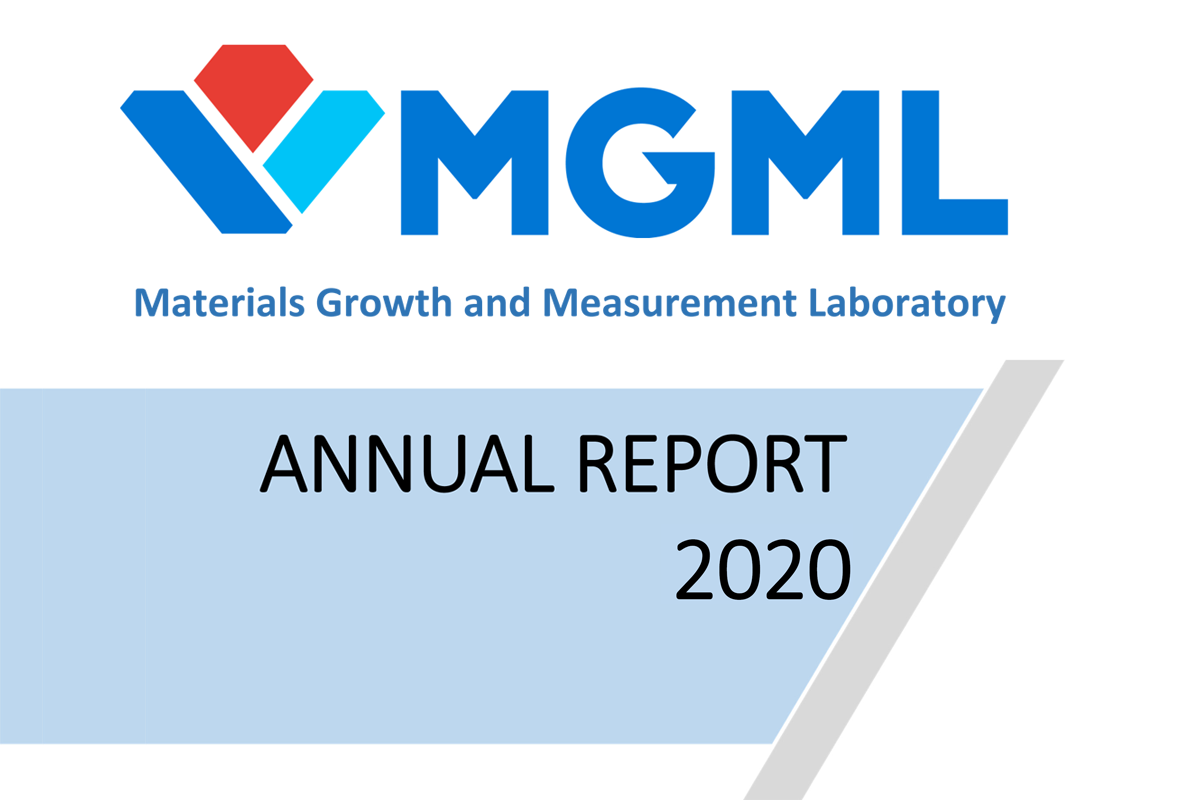
We present the annual report covering “Covid year” 2020. The facility significantly increased both national and international collaboration. As Scientific Highlights we are presenting complex studies on geometrically frustrated pyrochlore lattice and the discovery of the new phase of water when trapped within crystal lattice.
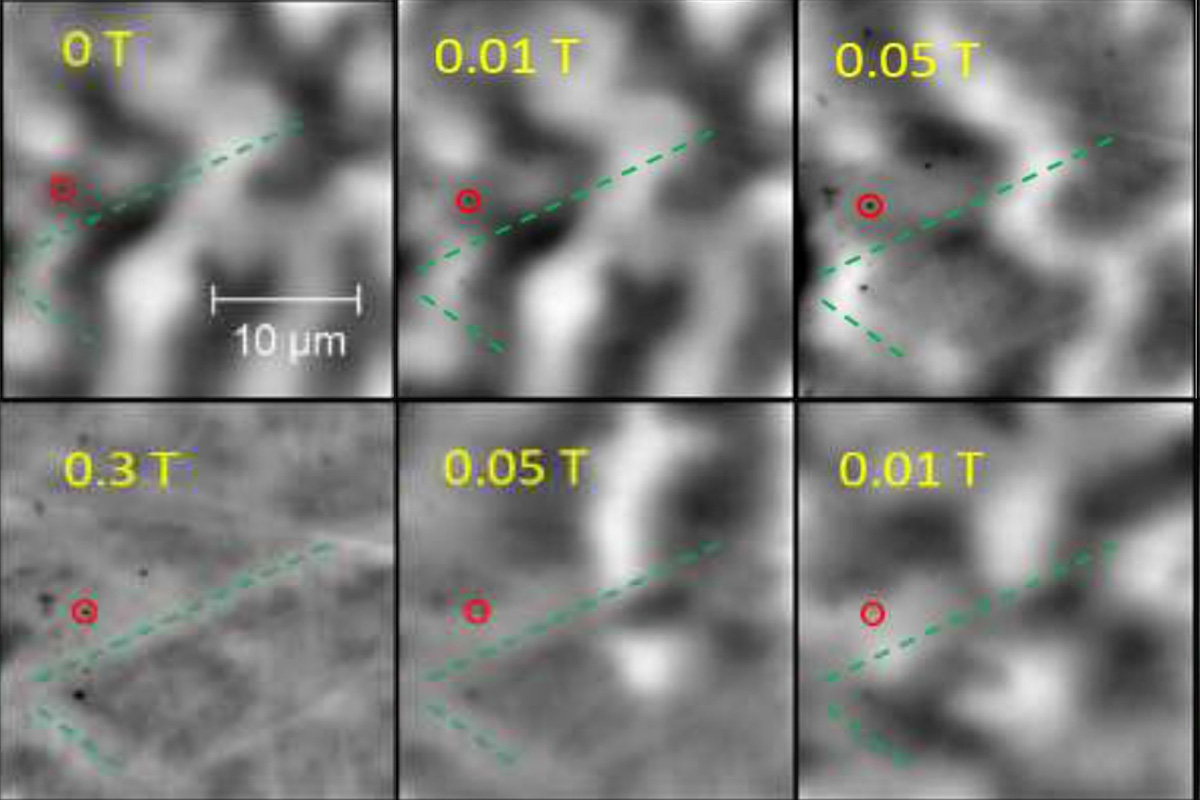
Low temperature magnetic force microscopy can be used to study magnetic domains in both thin films and (well polished) bulk materials. MGML scientists have performed such studies of an uniaxial ferromagnet UCoGa prepared in single crystalline form, showing extremely narrow magnetic domain walls.
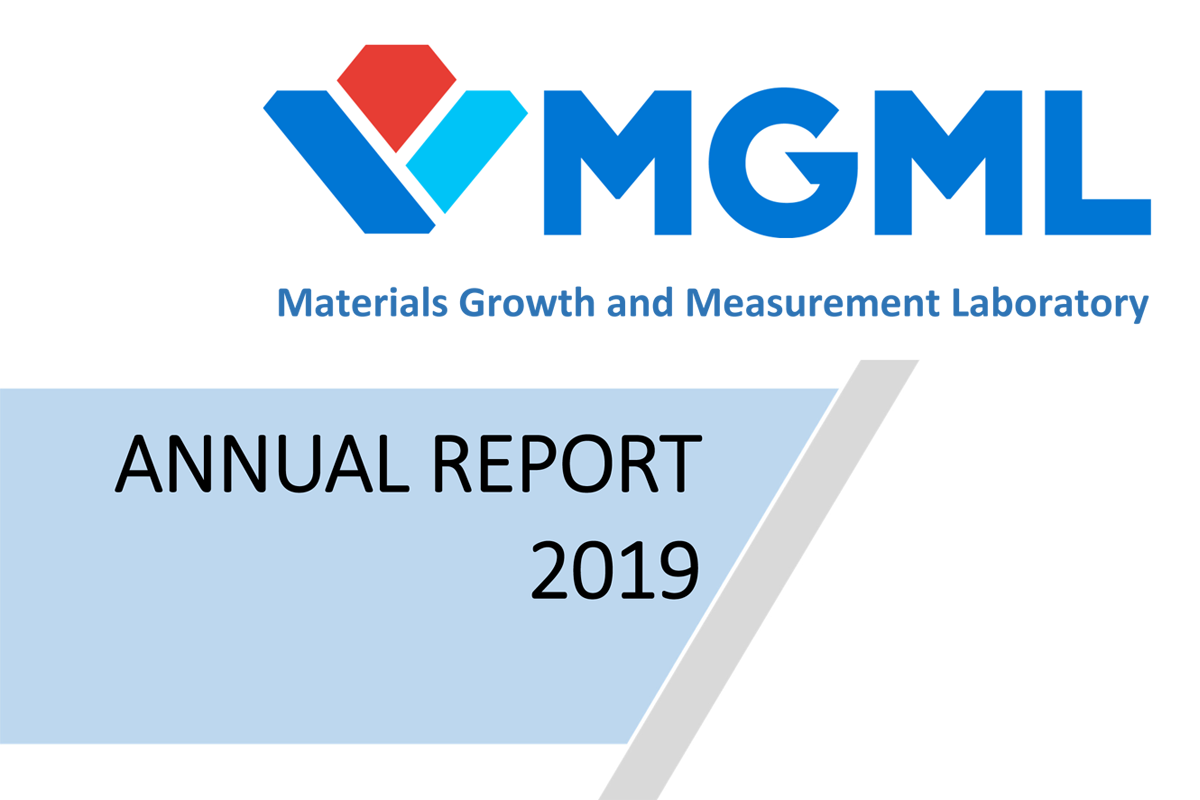
Our first annual report. This year’s Scientific Highlights features studies on two modern hot-topic group of compounds: Topological insulators and van der Waals materials. The annual report also presents our recent technical development as well as facts and figures about MGML, our user programme and collaboration with industrial sector.
